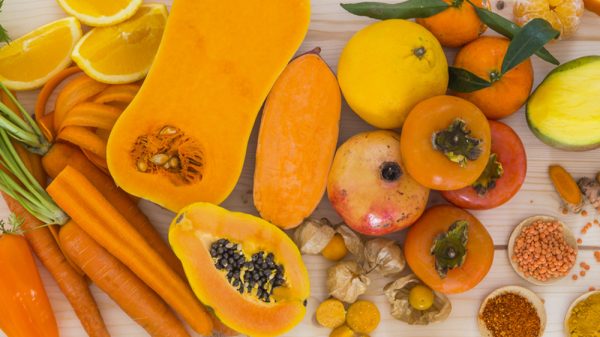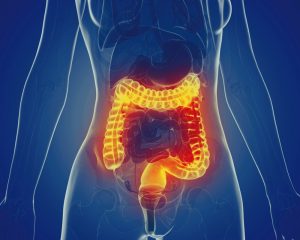It’s no secret that as we get older, our bodies begin to slowly become less efficient. Laugh lines and crow’s feet make an appearance on the face, and hair starts to gray. The aging process also affects all organ systems, including the digestive system. Maintaining digestive health for older adults, however, is particularly important for slowing down the aging process for other organ systems. Read on to find out why easily digested foods and protein consumption are crucial for maintaining long-term health.
Why Is It Important to Consume Easily Digested Foods for Protein?
Easy to digest foods offer more bioavailable nutrients, especially for older adults. Protein is a particular concern since older individuals are vulnerable to muscle wasting or sarcopenia. Why do older adults tend to lose muscle mass over time? As the human body gets older, it is subjected to the normal wear and tear of everyday life. Over time, all physical processes slow down over time and begin to make more mistakes. In general, biological processes please tend to get slower and less effective. This is why as we get older, we become more prone to non-communicable diseases such as type 2 diabetes, insulin resistance, high cholesterol, high blood pressure, and nonalcoholic fatty liver disease.
As body processes slow down across the board, this means that protein metabolism and muscle synthesis become less efficient as well. The result is a wasting away of muscle tissue.
Why can’t older adults simply eat more protein? Simply increasing the intake of protein doesn’t always translate to more bioavailable protein.
Easiest Foods To Digest That Also Contain Protein
High-protein foods that are easy to digest help elderly adults get the protein that they need. So, what foods are easy to digest and also contain lots of protein?
1. High-Protein Liquid and Soft Foods
Nutritional shakes and softer foods are by nature easier to digest than solid foods. Taking advantage of the softer texture of food to ease the digestion of protein sources may help elderly individuals more successfully break down protein into essential amino acids that can then be absorbed into the bloodstream. Healthy, high-protein liquids include beverages like soymilk. Yogurt is another excellent example of soft food that contains an ideal source of protein.
2. Whey Protein
Whey protein has been shown to be easily digested among elderly individuals, more effectively than casein, which is a protein found in dairy products. (1)
Whey protein can be used as a protein supplement to be added to water, porridge, sweet potato puree, applesauce, shakes, and smoothies. Whey protein contains optimal ratios of all essential amino acids, including leucine, isoleucine, and valine, which support the healthy turnover of muscle tissue and immune system function.
3. Choose Proteins with a High PDCAAS
The PDCAAS stands for the protein digestibility-corrected amino acid score and determines the quality of protein. A protein source with a higher PDCAAS (closer to 1) means that it contains optimal ratios of essential amino acids, and these essential amino acids are also bioavailable. Animal sources of protein all have a PDCAAS of 1, making them more ideal protein sources. It’s important to incorporate proteins with a high PDCAAS score into your daily regimen. For example, you may want to have a slice of chicken breast or a filet of salmon for dinner. Both chicken and salmon provide healthy protein with optimal ratios of essential amino acids. Salmon offers the extra benefits of omega-3 fatty acids, which help reduce inflammation in the body. In general, choose lean meat that doesn’t contain a lot of saturated fat.
4. Essential Amino Acid Supplements
Though older adults handle whey protein fairly well, the most bioavailable supplement is essential amino acid powder. This supplement contains optimally balanced ratios of essential amino acids that the body requires for synthesizing muscle tissue, connective tissue, hormones, and neurotransmitters, as well as for boosting immune function.
Because the essential amino acids are already available in their individual form, no further digestion is required. The body is able to readily absorb the free essential amino acids, and send them throughout the body to wherever they are needed.
Other Tips for Increasing Protein Utilization in Older Adults
1. Eat Frequent, Small Meals that Contain Protein
Eating frequent, small meals that are rich in protein is allows for protein to be processed more effectively by the digestive systems of older adults. Eating a large serving of protein in one sitting is difficult for the body to break down, and much of it instead ends up spending too long in the digestive system.
On the other hand, by incorporating a good source of protein into each small meal or snack, the digestive system isn’t overwhelmed. Instead, each protein source can be broken down into its individual amino acids. The amino acids can then be absorbed more readily and send throughout the body to support muscle synthesis, neurotransmitter synthesis, and immune system function.
2. Take Small Bites and Chew Thoroughly
There are two types of digestion: mechanical digestion and chemical digestion. Mechanical digestion occurs in the mouth when the teeth grind up food particles into a more manageable size. The food particles are then shuttled into the stomach and small intestine, where they are further broken down by chemical methods. If food enters the stomach already sufficiently ground, the stomach and intestines will have an easier time breaking down the food into even smaller compounds. As a result, it will become easier for the small intestines to absorb vital macronutrients and micronutrients.
Supporting Overall Digestive Health in Older Adults
It’s important to distinguish the difference between food that’s easy to digest, and food that is healthy for the digestive system. While food that’s easy to digest may offer more bioavailable protein, a food that’s difficult to digest (like tough plant fibers) actually increases the amount of good bacteria in the gut and decreases inflammation. In addition to digesting and breaking down protein, promoting overall digestive health is vital for protecting the health of older adults and fighting against common gastrointestinal diseases and symptoms like diverticulosis and diverticulitis, acid reflux, heartburn, irritable bowel syndrome, indigestion, bloating, and just a generalized upset stomach. Moreover, the tips and strategies we provide here are also helpful for fighting fatty liver disease, insulin resistance, type 2 diabetes, and cardiovascular disease.
1. Eat Lots of Whole Grains
Whole grains are grain products that are left unprocessed or minimally processed. Whole grains are rich in fiber as well as protein, minerals, and vitamins. Eating a diet rich in fiber supports the health of the digestive system and encourages the growth of beneficial bacteria that support gut health. Following a high-fiber diet also encourages the steady movement of stools through the large intestine and supports regular bowel movements. Because the carbs in whole grains are paired with fiber, protein, and micronutrients, they are considered to be complex carbs that offer a steady source of energy without spiking blood sugar. Good examples of whole grains include brown rice and quinoa.
On the other hand, it’s important to stay away from refined grains like white rice and white bread. These foods have had nearly all nutritional value removed, and even though they might taste good, they actually cause inflammation in the tummy and other organ systems.
2. Eat Lots of Fruits and Veggies
Fruits and veggies are therapeutic for nearly every organ system, from the brain and the liver to the cardiovascular system and gastrointestinal tract. Fruits and veggies not only afford tons of soluble and insoluble fiber, but also lots of micronutrients like vitamins, minerals, and antioxidants. Eating lots of fresh produce has tons of health benefits and positive implications for gut health. The insoluble fiber present in many fruits and veggies helps support beneficial bacteria in the gut that produce anti-inflammatory compounds.
3. Avoid Meals High in Saturated Fat
Saturated fat is the fat that is primarily found in animal products like cheese, whole milk, steak, and burgers. Saturated fat is an enemy for digestive health in many ways. First, saturated fat is implicated in high cholesterol levels, fatty liver disease, and cardiovascular disease. Second, eating too much saturated fat causes bloating, heartburn, and can trigger gallbladder issues. When eating meat and dairy products, choose low-fat options that a limited amount of or no saturated fat. To limit saturated fat in your diet, stay away from fried foods, fatty cuts of meat, and full-fat dairy products.
4. Eat Probiotic Foods
Probiotics are beneficial bacteria that colonize the digestive tract and support a healthy gut microbiome. There are certain foods you can eat that contain lots of probiotic bacteria, including yogurt, kefir, and fermented foods like sauerkraut and kimchi.
5. Avoid Spicy Food
For some individuals, eating heavily spiced food can trigger heartburn, GERD, or acid reflux symptoms. Spicy food may even be associated with other unpleasant GI tract symptoms like diarrhea. If you think you may have a sensitivity to spicy foods, try cutting them out and see how you feel.
6. Keep Dairy Products to a Minimum
Though yogurt and low-fat dairy products offer probiotics and high-quality protein, too much dairy can cause inflammation. The digestion of dairy produces trimethylamine-N-oxide, which causes inflammation throughout the body. Plus, if you suffer from lactose intolerance, you likely experience unpleasant symptoms associated with dairy consumption.
7. Avoid Processed and Packaged Foods
Processed and packaged foods tend to contain very few grams of fiber and are filled with artificial sweeteners and additives that can be irritating for the digestive system, especially for older adults who have digestive issues. As a general rule of thumb, steer clear of foods that are wrapped in packaging. For example, stay away from cookies, granola bars, sugary breakfast cereals, processed meats, and prepared and frozen food items.
Conclusion
In general, older adults’ digestive systems are more sensitive to diet quality that the digestive systems of younger adults. Because older adults lose muscle mass easily and must work hard to maintain it, dietary protein sources play a critical role. Whey protein and essential amino acid supplements are the most bioavailable supplements that can be added to soft and liquid foods, in order to increase protein absorption and utilization in the body. On top of that, eating a healthy diet that’s high in fiber and whole foods is very important for everyone’s gut health and overall health.

References:























